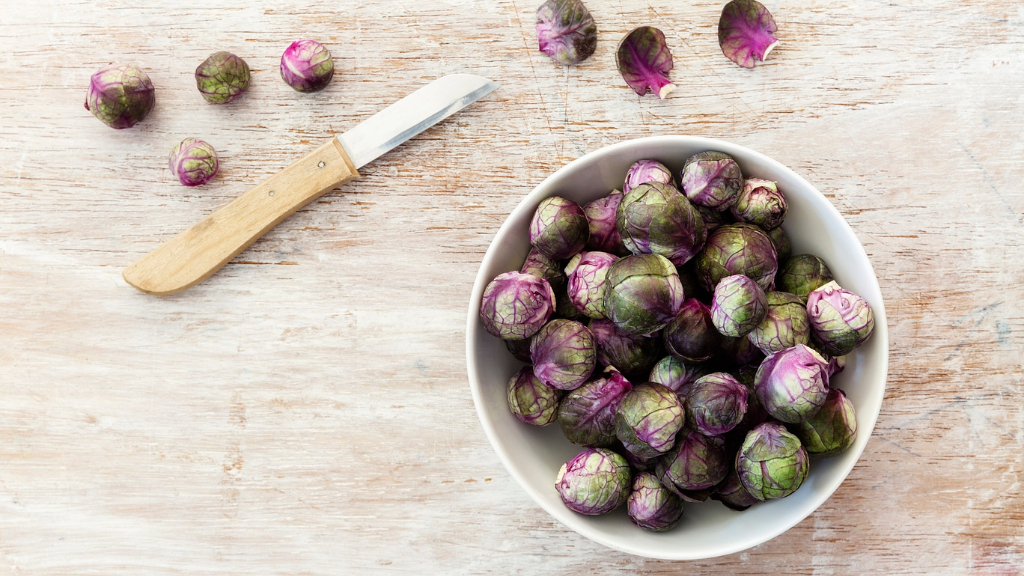Red Rubine Brussels Sprouts History


Red Rubine Brussels sprouts (Brassica oleraea gemmifera 'Rubine') are unique, colorful plants that produce an abundant harvest of striking, reddish-purple sprouts. The plants are tall, reaching heights of 3.25 feet (1 m.) at maturity. There are many good reasons to plant Red Rubine Brussels sprouts. The plants aren't difficult to grow, they're beautiful in the garden, and cooks appreciate the gourmet sprouts for their rich, nutty flavor.
Rubine Brussels Sprout History
Botanists think Brussels sprouts were first grown in Medieval Europe, specifically the area currently known as Belgium. However, Brussels sprouts weren't introduced to North America until the mid-nineteenth century. The beautiful color of Red Rubine Brussels sprouts was created by crossing Brussels sprouts with red cabbage. The plant dates to about 1954, so although it is relatively new, its age qualifies as an heirloom plant. However, true heirloom plants are open pollinated and never hybridized.
Growing Heirloom Brussels Sprouts
Growing Red Rubine Brussels sprouts is no different than growing any other type of Brussels sprouts. However, this particular type of Brussels sprouts takes a little longer to ripen than traditional green varieties, and the yield may be smaller. For this reason, Red Rubine is often grown for its ornamental value. Like all Brussels sprouts, Red Rubine is a cool weather plant that requires fertile, well-drained soil, regular fertilizer and consistent moisture. Locate Brussels sprouts where the plants receive at least six hours of sunlight per day, preferably more. Pick Red Rubine Brussels sprouts when they're firm and measuring about an inch (2.5 cm.) in diameter. Pick from the bottom of the plant so the small sprouts at the top will continue to mature.
Gardening tips, videos, info and more delivered right to your inbox!
Sign up for the Gardening Know How newsletter today and receive a free copy of our e-book "How to Grow Delicious Tomatoes".

A Credentialed Garden Writer, Mary H. Dyer was with Gardening Know How in the very beginning, publishing articles as early as 2007.
-
 Grow ‘Karl Rosenfield’ Peony Plants For The Ultimate Frilly Border Beauties And Cut Flowers
Grow ‘Karl Rosenfield’ Peony Plants For The Ultimate Frilly Border Beauties And Cut FlowersFor frilly double magenta peony petals infused with a heady fragrance, grow ‘Karl Rosenfield’ peony plants. Here’s how to cultivate the ultimate plushy blooms
By Tonya Barnett
-
 10 Common Composting Problems That Can Spoil Your Garden Gold – Plus Easy Fixes
10 Common Composting Problems That Can Spoil Your Garden Gold – Plus Easy FixesLearn how to troubleshoot common composting issues before they ruin your stash – from bad smells and bugs to materials not breaking down as they should.
By Susan Albert